-
 Bitcoin
Bitcoin $104,969.4065
1.78% -
 Ethereum
Ethereum $2,490.0488
1.17% -
 Tether USDt
Tether USDt $1.0007
0.01% -
 XRP
XRP $2.1801
2.16% -
 BNB
BNB $647.2404
1.15% -
 Solana
Solana $150.9340
2.14% -
 USDC
USDC $1.0000
0.01% -
 Dogecoin
Dogecoin $0.1831
3.95% -
 TRON
TRON $0.2779
0.45% -
 Cardano
Cardano $0.6625
3.18% -
 Hyperliquid
Hyperliquid $34.1255
-2.27% -
 Sui
Sui $3.2745
8.65% -
 Chainlink
Chainlink $13.9560
5.44% -
 Avalanche
Avalanche $20.2603
4.10% -
 UNUS SED LEO
UNUS SED LEO $9.1085
3.14% -
 Stellar
Stellar $0.2646
1.36% -
 Bitcoin Cash
Bitcoin Cash $396.9745
2.37% -
 Toncoin
Toncoin $3.1790
2.86% -
 Shiba Inu
Shiba Inu $0.0...01270
3.86% -
 Hedera
Hedera $0.1676
1.61% -
 Litecoin
Litecoin $88.0410
4.45% -
 Polkadot
Polkadot $4.0052
2.41% -
 Monero
Monero $322.3331
0.14% -
 Ethena USDe
Ethena USDe $1.0013
0.01% -
 Bitget Token
Bitget Token $4.6655
1.00% -
 Dai
Dai $1.0000
0.00% -
 Pepe
Pepe $0.0...01149
4.52% -
 Pi
Pi $0.6270
1.23% -
 Uniswap
Uniswap $6.1393
2.12% -
 Aave
Aave $252.9141
1.79%
Is the gap that jumps high must be filled? Is it a buying opportunity when it is filled?
A high-jumping gap in crypto markets may not always be filled due to volatility, but if filled, it could be a buying opportunity if aligned with bullish trends and indicators.
Jun 04, 2025 at 10:50 pm

Is the gap that jumps high must be filled? Is it a buying opportunity when it is filled?
In the world of cryptocurrencies, the concept of "gaps" often arises when discussing price movements on charts. A gap occurs when the price of a cryptocurrency jumps from one level to another without any trading occurring in between. This phenomenon is particularly visible on daily, weekly, or monthly charts and is often a subject of intense debate among traders. The question of whether a high-jumping gap must be filled and if it presents a buying opportunity when it is filled is crucial for those looking to capitalize on these movements. Let's delve into these aspects in detail.
Understanding Gaps in Cryptocurrency Markets
A gap in the cryptocurrency market is typically observed on candlestick charts, where the opening price of a new period (day, week, month) is significantly different from the closing price of the previous period. Gaps can be categorized into three types: breakaway gaps, runaway gaps, and exhaustion gaps. Each type has its own implications and potential outcomes.
- Breakaway gaps occur at the beginning of a new trend, signaling a strong shift in market sentiment.
- Runaway gaps, also known as continuation gaps, appear during the middle of a trend and suggest that the trend is likely to continue.
- Exhaustion gaps happen near the end of a trend and indicate that the trend may be running out of steam.
The Theory of Gap Filling
The theory that all gaps must be filled stems from traditional financial markets, where it is believed that gaps are anomalies that the market will eventually correct. In the cryptocurrency market, however, this theory is not universally applicable. The decentralized and often volatile nature of cryptocurrencies means that gaps might not always be filled, especially if the gap is caused by significant news or events that permanently alter the market's perception of the asset.
Factors Influencing Gap Filling
Several factors can influence whether a gap in the cryptocurrency market will be filled:
- Market Sentiment: If the gap is driven by strong bullish or bearish sentiment, it may take longer to fill or might not be filled at all.
- Volume: High trading volumes can either reinforce the gap or lead to its filling, depending on the direction of the volume.
- News and Events: Significant news or events can cause gaps that are less likely to be filled, as they can fundamentally change the asset's value.
Is a Filled Gap a Buying Opportunity?
Whether a filled gap represents a buying opportunity depends on several factors:
- Trend Analysis: If the filled gap occurs within a strong bullish trend, it might be a good buying opportunity. Conversely, if it occurs in a bearish trend, it might not be advisable to buy.
- Technical Indicators: Using technical indicators like moving averages, RSI, and MACD can help determine if the filled gap aligns with other bullish signals.
- Volume and Price Action: High volume and strong price action at the point of gap filling can indicate a strong buying interest, suggesting a potential buying opportunity.
Strategies for Trading Gaps
Traders often employ different strategies when dealing with gaps in the cryptocurrency market:
- Gap Trading Strategy: This involves buying immediately after a gap up or selling after a gap down, anticipating that the gap will be filled.
- Trend Following Strategy: Traders using this approach will look for gaps that align with the overall trend and use them as entry points.
- Breakout Strategy: Some traders will wait for a gap to be filled and then look for a breakout in the direction of the trend as a signal to enter a trade.
Practical Example of Trading a Filled Gap
Let's walk through a hypothetical example of trading a filled gap in the cryptocurrency market:
- Identify the Gap: Suppose Bitcoin (BTC) experiences a gap up from $40,000 to $42,000 due to positive regulatory news.
- Monitor the Price Action: Over the next few days, the price of BTC starts to decline and eventually reaches $40,000, filling the gap.
- Analyze the Trend and Indicators: Before deciding to buy, check the overall trend and technical indicators. If the trend remains bullish and indicators like the RSI are not overbought, it might be a good time to buy.
- Execute the Trade: Place a buy order at $40,000, with a stop-loss just below the filled gap to manage risk.
- Monitor and Adjust: Keep an eye on the price movement and adjust the stop-loss as the price moves in your favor.
Risks and Considerations
While trading gaps can be profitable, it comes with its own set of risks:
- Volatility: Cryptocurrency markets are highly volatile, and gaps can widen or narrow unexpectedly.
- False Signals: Not all filled gaps lead to profitable trades. Sometimes, they can be false signals that lead to losses.
- Liquidity: Low liquidity can exacerbate the impact of gaps, making it harder to enter or exit trades at desired prices.
Conclusion
Understanding and trading gaps in the cryptocurrency market requires a nuanced approach. While the theory that all gaps must be filled is not always applicable, recognizing the factors that influence gap filling and using appropriate strategies can help traders make informed decisions. Whether a filled gap represents a buying opportunity depends on a thorough analysis of the market conditions, trends, and technical indicators.
Frequently Asked Questions
Q1: Can gaps in the cryptocurrency market occur on intraday charts?
Yes, gaps can occur on intraday charts, especially on lower time frames like 1-hour or 4-hour charts. However, they are less common and often less significant compared to gaps on daily, weekly, or monthly charts.
Q2: How can I identify if a gap is a breakaway, runaway, or exhaustion gap?
To identify the type of gap, analyze the context in which it occurs:
- Breakaway gaps happen at the start of a new trend, often accompanied by high volume and a significant price move.
- Runaway gaps occur during the middle of a trend, suggesting the trend's continuation, and are also typically accompanied by high volume.
- Exhaustion gaps appear near the end of a trend, often with lower volume and followed by a reversal in price direction.
Q3: Are there any specific cryptocurrencies where gaps are more common?
Gaps can occur in any cryptocurrency, but they are more noticeable in highly liquid and widely traded assets like Bitcoin (BTC) and Ethereum (ETH). These cryptocurrencies often experience significant price movements due to their large market caps and high trading volumes.
Q4: How should I set my stop-loss when trading a filled gap?
When trading a filled gap, set your stop-loss just below the filled gap level to manage risk. For example, if you buy at the filled gap price of $40,000, place your stop-loss at $39,500 to limit potential losses if the price continues to decline.
Disclaimer:info@kdj.com
The information provided is not trading advice. kdj.com does not assume any responsibility for any investments made based on the information provided in this article. Cryptocurrencies are highly volatile and it is highly recommended that you invest with caution after thorough research!
If you believe that the content used on this website infringes your copyright, please contact us immediately (info@kdj.com) and we will delete it promptly.
- DLB Coin (Digital LinkBridge) Releases New Analysis on How Trading Platforms Can Adapt to Evolving Regulatory Priorities
- 2025-06-07 13:50:13
- Qubetics ($TICS): The Cross-Border Blockchain Powering Future Finance
- 2025-06-07 13:50:13
- title: K-pop singer and White Lotus star Lisa is facing backlash over her Met Gala look, which featured underwear seemingly embroidered with Rosa Parks' face.
- 2025-06-07 13:45:13
- The meme coin market is experiencing heightened volatility, with projects like Zerebro, Fartcoin, and Lofi all moving sharply in opposite directions.
- 2025-06-07 13:45:13
- Reserve's Index DTFs introduce a new governance feature: vote-locking tokens
- 2025-06-07 13:40:13
- In the Wake of ThorFi’s 2025 Default, THORChain (RUNE) Has Unveiled TCY
- 2025-06-07 13:40:13
Related knowledge
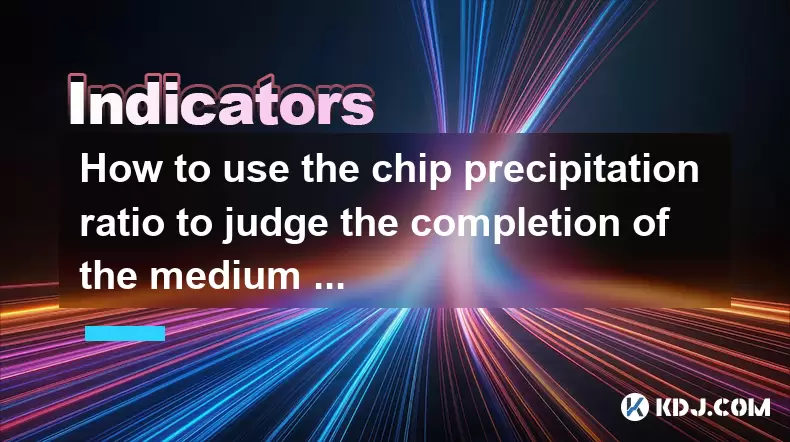
How to use the chip precipitation ratio to judge the completion of the medium and long-term bottom construction?
Jun 04,2025 at 03:36am
The chip precipitation ratio is a crucial metric used by investors to assess the accumulation of chips (or shares) at different price levels over time. This ratio helps in understanding the distribution of chips and can be a powerful tool for determining the completion of medium and long-term bottom construction in the cryptocurrency market. By analyzin...
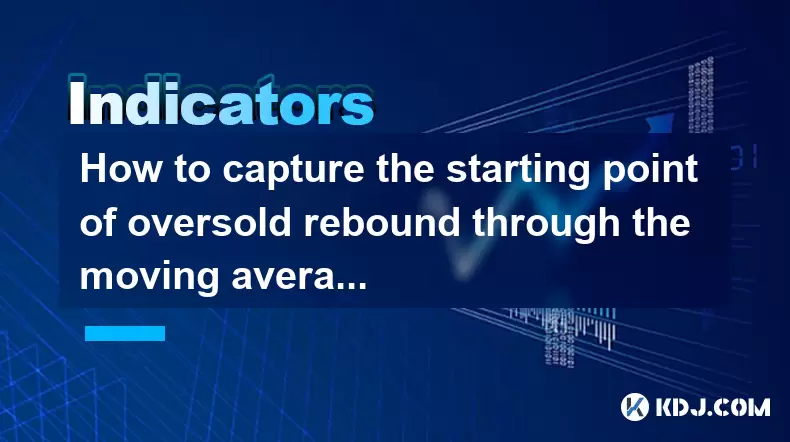
How to capture the starting point of oversold rebound through the moving average gravity reversal strategy?
Jun 04,2025 at 01:01pm
The moving average gravity reversal strategy is a sophisticated approach used by traders to identify potential entry points for buying cryptocurrencies when they are considered oversold. This strategy leverages the concept of moving averages to pinpoint moments when a cryptocurrency might be poised for a rebound. In this article, we will delve into the ...
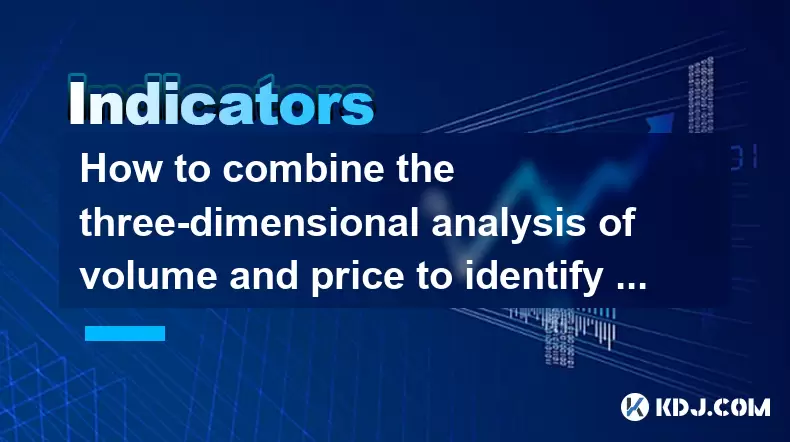
How to combine the three-dimensional analysis of volume and price to identify the golden buying point of breakthrough and retracement?
Jun 03,2025 at 11:42pm
In the dynamic world of cryptocurrencies, identifying the optimal buying points is crucial for maximizing profits and minimizing risks. One effective method to achieve this is by combining three-dimensional analysis of volume and price to pinpoint the golden buying points during breakouts and retracements. This article will delve into how to use this ap...
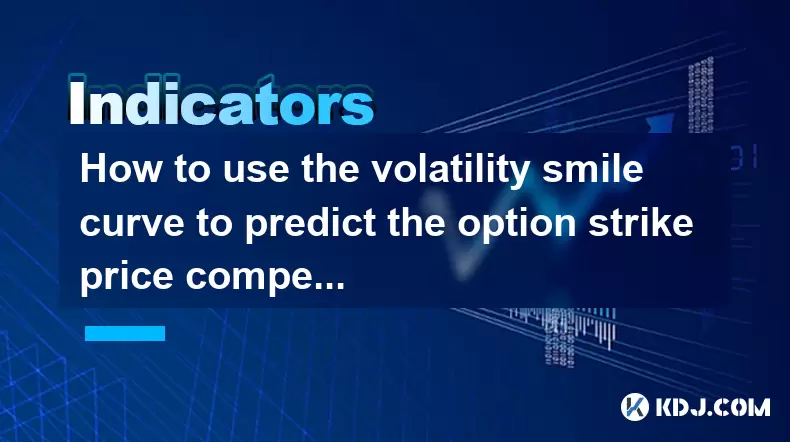
How to use the volatility smile curve to predict the option strike price competition area?
Jun 06,2025 at 01:01pm
The volatility smile curve is a graphical representation that shows the implied volatility of options across different strike prices for a given expiration date. It is called a 'smile' because the curve often takes the shape of a smile, with higher implied volatilities for options that are deep in-the-money or deep out-of-the-money, and lower implied vo...
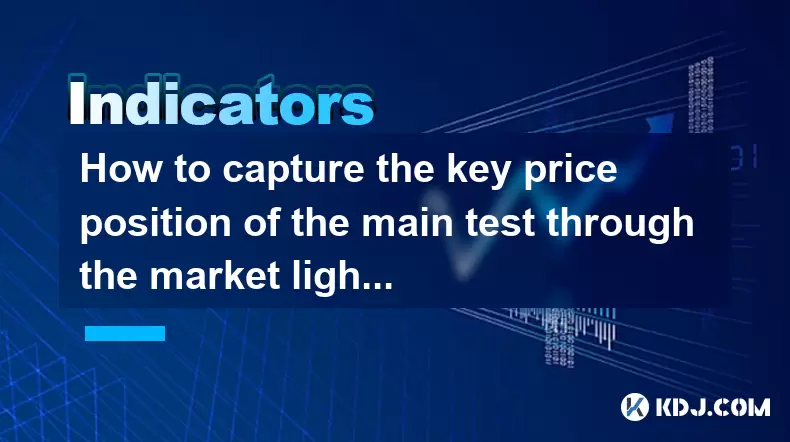
How to capture the key price position of the main test through the market lightning chart?
Jun 02,2025 at 06:07pm
Introduction to Market Lightning ChartThe market lightning chart is a powerful tool used by cryptocurrency traders to visualize price movements and identify key price positions. This chart type provides a detailed view of market activity, allowing traders to spot trends, reversals, and other significant price levels quickly. By understanding how to use ...
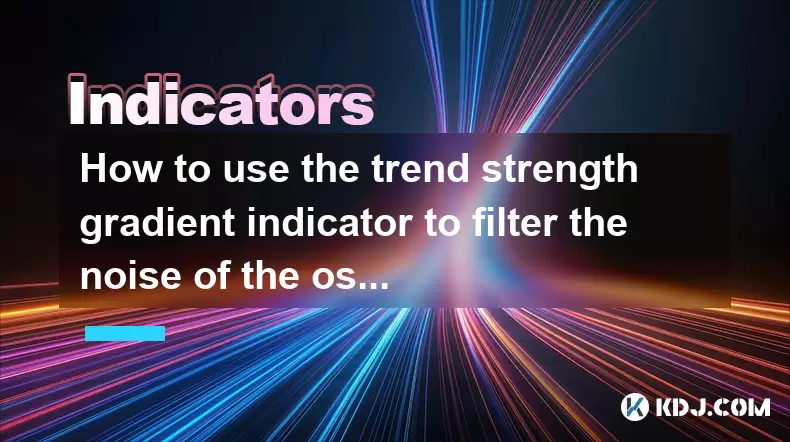
How to use the trend strength gradient indicator to filter the noise of the oscillating market?
Jun 06,2025 at 06:15pm
The trend strength gradient indicator is a powerful tool used by cryptocurrency traders to analyze market trends and filter out the noise that often accompanies oscillating markets. This indicator helps traders identify the strength of a trend, enabling them to make more informed decisions. In this article, we will explore how to effectively use the tre...

How to use the chip precipitation ratio to judge the completion of the medium and long-term bottom construction?
Jun 04,2025 at 03:36am
The chip precipitation ratio is a crucial metric used by investors to assess the accumulation of chips (or shares) at different price levels over time. This ratio helps in understanding the distribution of chips and can be a powerful tool for determining the completion of medium and long-term bottom construction in the cryptocurrency market. By analyzin...

How to capture the starting point of oversold rebound through the moving average gravity reversal strategy?
Jun 04,2025 at 01:01pm
The moving average gravity reversal strategy is a sophisticated approach used by traders to identify potential entry points for buying cryptocurrencies when they are considered oversold. This strategy leverages the concept of moving averages to pinpoint moments when a cryptocurrency might be poised for a rebound. In this article, we will delve into the ...

How to combine the three-dimensional analysis of volume and price to identify the golden buying point of breakthrough and retracement?
Jun 03,2025 at 11:42pm
In the dynamic world of cryptocurrencies, identifying the optimal buying points is crucial for maximizing profits and minimizing risks. One effective method to achieve this is by combining three-dimensional analysis of volume and price to pinpoint the golden buying points during breakouts and retracements. This article will delve into how to use this ap...

How to use the volatility smile curve to predict the option strike price competition area?
Jun 06,2025 at 01:01pm
The volatility smile curve is a graphical representation that shows the implied volatility of options across different strike prices for a given expiration date. It is called a 'smile' because the curve often takes the shape of a smile, with higher implied volatilities for options that are deep in-the-money or deep out-of-the-money, and lower implied vo...

How to capture the key price position of the main test through the market lightning chart?
Jun 02,2025 at 06:07pm
Introduction to Market Lightning ChartThe market lightning chart is a powerful tool used by cryptocurrency traders to visualize price movements and identify key price positions. This chart type provides a detailed view of market activity, allowing traders to spot trends, reversals, and other significant price levels quickly. By understanding how to use ...

How to use the trend strength gradient indicator to filter the noise of the oscillating market?
Jun 06,2025 at 06:15pm
The trend strength gradient indicator is a powerful tool used by cryptocurrency traders to analyze market trends and filter out the noise that often accompanies oscillating markets. This indicator helps traders identify the strength of a trend, enabling them to make more informed decisions. In this article, we will explore how to effectively use the tre...
See all articles

























































































